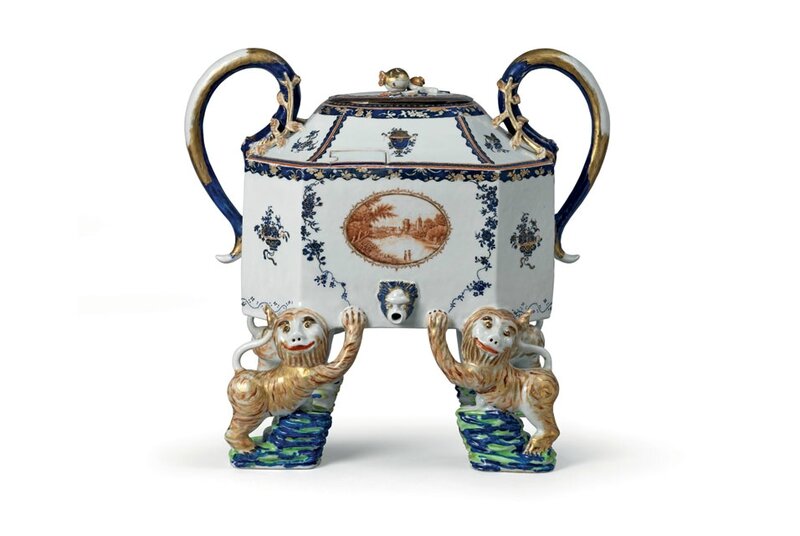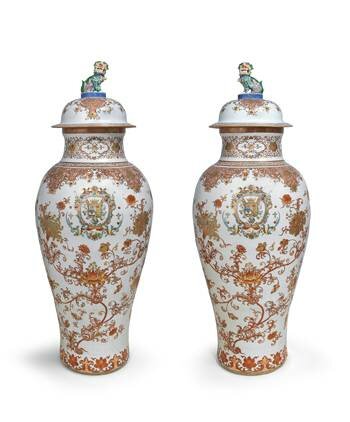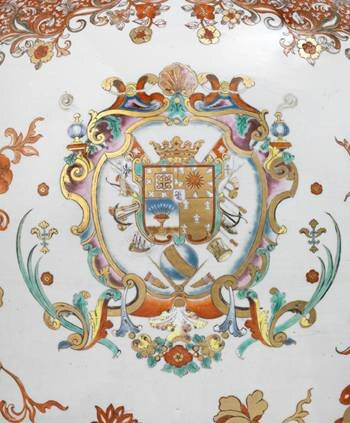Cross-cultural works of art from China and Japan to be exhibited by Jorge Welsh at TEFAF Maastricht 2017
A rare and large cistern, from the Qing dynasty, Qianlong period (1736-1795), measuring 40 by 43cm, and decorated with a view of Westgate, Canterbury, England. © Jorge Welsh
LONDON.- For the 30th anniversary of TEFAF Maastricht, the gallery Jorge Welsh Works of Art will unveil an important collection of Chinese export porcelain and Japanese export lacquer.
Some of the highlights include:
A rare and large cistern, from the Qing dynasty, Qianlong period (1736-1795), measuring 40 by 43cm, and decorated with a view of Westgate, Canterbury, England. This cistern was probably meant to be used as the centrepiece in social gatherings, where a shared drink was served. In Europe hot water vessels were used by the host for refilling tea and coffee pots or to serve hot punch and contained an outer compartment filled with hot water to keep the contents of the cistern warm.
This exquisite piece was originally owned by William FitzHugh (1757-1803), a supercargo at Canton between 1776 and 1791. It is suggested that the four lions supporting the cistern may have been adapted from the arms of the Honourable East India Company, in whose employ the original owner served.
One of the scenes on the cistern was based on an engraving by the British artist Samuel Middiman (1750-1831), entitled South West view of West Gate, Canterbury, which was originally published between 1784-87 in the book Select Views in Great Britain. An example of the original book will be displayed along with the piece.
A pair of 'Soldier' Vases and Covers with the Arms of Francisco José de Ovando y Solís, decorated in overglaze iron red, yellow, blue and turquoise enamels and gold, from the Qing dynasty, Qianlong period (1736-1795). © Jorge Welsh
Porcelain vases of enormous dimensions, such as the present examples, were made at great expense in China, they were the result of impressive technical achievements by the potters at the kilns in Jingdezhen and were considered the most costly Chinese porcelains exported to the West. Made by order for Europeans, vases of this type were highly valued for the quality of their porcelain, their rarity and splendid beauty.
These two vases are the only ones so far recorded with this particular armorial.
The name “soldier vases” derives from a historic exchange between Augustus the Strong, Elector of Saxony and King of Poland and Lithuania (1670-1733), and the ‘Soldier King’ Friedrich Wilhelm I, King of Prussia (1688-1740), in 1717. The former, a patron of the Meissen porcelain factory and avid collector of Chinese porcelain, exchanged 151 porcelain vessels for 600 cavalrymen (dragoons) from his army.
This pair of vases exhibits the arms of Francisco José de Ovando y Solís (1693-1755), 1st Marquis of Ovando, a title that was granted to him in 1743 for his bravery during the capture of Brindisi during the Spanish invasion of Naples. He was born in Cáceres, Spain, but soon became a renowned naval officer, being appointed Chief Inspector of the South China Sea in 1743.
Two services bearing his arms are known to exist. Pieces from these services are presently in the Museo Nacional de Artes Decorativas in Madrid, in the Victoria and Albert Museum in London, in the Museo Franz Mayer in Mexico City and in private collections.
A set of eight large and heavily potted dishes made from white porcelain and coated in a slightly bluish glaze, Qing dynasty, Kangxi period (1662-1722) © Jorge Welsh
richly decorated with Chinese symbols. The combination of the four flowers - peony, chrysanthemum, lotus and camellia – represents the four seasons, and also, as the ‘king of flowers’, the peony symbolizes wealth and honour, as well as the first rank amongst officials. It is also one of the most popular motifs in the Chinese decorative arts. The panelled designs decorating these dishes were fashionable for the export market and busy patterns were mostly desired.
Similar decorated dishes are in the Asian Art Museum of San Francisco, the Topkapi Saray Museum in Istanbul, the Freer Gallery of Art in Washington and the Victoria and Albert Museum in London, among others. Two further dishes are in the RA Collection.
Over 200 works of art will be showcased at stand 210, each individually selected for its high quality, rarity and cultural or historical importance.
TEFAF Maastricht is regarded as the world’s leading art fair, setting the standard for excellence in the art market. The Fair truly is an event not to be missed by collectors and museum representatives. Presenting 280 of the world’s leading galleries, TEFAF Maastricht is a continuously evolving showcase for the best works of art currently on the market.

/https%3A%2F%2Fprofilepics.canalblog.com%2Fprofilepics%2F1%2F0%2F100183.jpg)
/https%3A%2F%2Fstorage.canalblog.com%2F03%2F02%2F119589%2F96711876_o.jpg)
/https%3A%2F%2Fstorage.canalblog.com%2F11%2F31%2F119589%2F94773502_o.jpg)
/https%3A%2F%2Fstorage.canalblog.com%2F20%2F83%2F119589%2F94772815_o.jpg)
/https%3A%2F%2Fstorage.canalblog.com%2F26%2F72%2F119589%2F75604929_o.jpg)
/https%3A%2F%2Fstorage.canalblog.com%2F59%2F60%2F119589%2F26458628_o.jpg)






/image%2F1371349%2F20240423%2Fob_af8bb4_telechargement-6.jpg)
/image%2F1371349%2F20240423%2Fob_b6c4a6_telechargement.jpg)
/image%2F1371349%2F20240416%2Fob_65a1d8_telechargement-31.jpg)
/image%2F1371349%2F20240331%2Fob_7209d9_117-1.jpg)